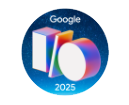Search is no longer just a list of results: AI summaries and answer engines (including ChatGPT) provide a single, coherent answer. To get featured in these answers from WordPress, your content needs to be concise and quotable: short, clear paragraphs, natural language FAQs, and dates + sources for every important statement. This article will show you step-by-step how to do it — with minimal plugin usage.
2.TL;DR
• Fewer plugins, more speed: ChatGPT-friendly content It will be citation-able not from extensions, but from the quality of the structure and sourceability.
• Think in WP editing: have a lead conclusion, FAQ, tables, and a “Resources” block.
• Consistent entities: uniform brand name/company information/author bio at the end of each article.
• Specifics: each answer should include at least one number/time period/example + date.
• HU-focus: Hungarian terms, Hungarian examples, mobile-first structure.
3.1) Positioning – how is it different from classic SEO?
The classic SEO optimizes rankings, AIO (AI-Optimization) summarization. The goal is not to have your keyword be first at all costs, but to ensure that AI systems can confidently cite your articles.
WordPress practice:
– The first paragraph states the conclusion (1 sentence).
– 120–140 word paragraphs, divided into H2/H3 headings.
– Numbered lists and tables where possible.
4.2) How does ChatGPT “see” you? – clearly, for WP editors
ChatGPT "notices" you through two channels: 1) Embedded knowledge - what you have been writing about consistently for a long time and in many places. 2) Fresh, referable source - clear statements, date + link.
WP-to-do:
– At the end of the article, there should be a “Sources” section (3–6 items, 1-sentence statement + link + date).
– Separate FAQ block (6–10 natural questions with 2–5 sentence answers).
– Consistent writer/brand box (see point 3).
5.3) Entity strategy in WordPress – to be identifiable
AI summaries think in terms of entities. If your brand/authors are not consistently described, there is less chance of accurate citation.
What to do at the end of each article:
– About us/branding: company name + company form (if any), city/country, email/phone (on one line).
– Author bio: 2–3 sentences about the field, 1–2 authentic references (e.g. LinkedIn, professional publication).
– Consistent naming: the same brand name, format, and referencing everywhere.
6.4) Page structure that AI loves (WP editing patterns)
4.1 “What is it? How does it work? When is it worth it?”
Three subheadings, each 2–4 sentences, the first sentence answers.
4.2 Comparison table
Max. 7 columns, 10 rows. Include a “Who is it for?” column. Example rows: Advantage / Disadvantage / Typical use case / Who is it for?
4.3 FAQ — question-level optimization
– Write 6–10 natural questions, answering each with 2–5 sentences.
– First sentence = point.
– It should contain something specific (number, time period, example).
– If necessary, a short “exception/if-condition” trick.
– If relevant, include a source sentence (link + date) at the end of the answer.
4.4 Sources (at the bottom of the article) — pattern
– 3–6 items, statement → link → date.
– One item = 1–2 sentences.
– It can be mixed (own measurement + official description + industry research).
7.5) Schema.org markup (in short, without plugins)
Schema helps with machine reading, but “serp decoration” is now limited. Therefore, the focus is on interpretability. If SEO If you are using an extension, let it expose the Article/BlogPosting markup. Create your FAQ with the structure within the article; clarity of the pattern is important to ChatGPT in itself.
8.6) “Easy to Catch” Content Types (with WP Examples)
– Definition + example: short, clear description (HU terms), followed by 1 Hungarian example.
– How-to: 5–8 steps, 1–2 sentences each.
– Table: short, comparative.
– Mini “data box”: 1–5 lines of numerical summary (year/month + sample + average).
9.7) FAQ sample block (copyable text)
Question: How is AIO different from classic SEO?
Answer: AIO optimizes for summarization and linkability, not keyword position. In practice, this means short, well-structured paragraphs, natural question-based FAQs, and consistent source citations. Mobile-first structure and clear, numerical examples are especially important in the Hungarian market.
Question: How many FAQs should be in an article and how long should the answers be?
Answer: 6–10 questions is ideal. 2–5 sentences per answer are enough, the first sentence states the gist, the rest give the specifics (number/time frame/example).
Question: Is it worth using a separate plugin for everything?
Answer: Not necessary. ChatGPT-friendly content is a matter of editorial discipline. Keep as many plugins as are business-critical (e.g. cache/multilingual/SEO meta), and handle the rest with editorial tools.
10.8) EEAT microsamples (author credit and trust)
– Author box: 2–3 sentences of professional experience + 1–2 credible references.
– Last update: 1 line at the top of the article (with ISO date in the source code).
– Source sentences: short statements, with date.
– Transparent methodology: if you calculate, write it down: sample, time period, exceptions.
11.9) External signals “without backlinks”
– Consistent branding at the end of articles (same name/form/relationship).
– Mini “data boxes”: small, clean data that is easy to cite.
– Professional references: industry summaries, official documentation, Hungarian relevance.
12.10) Fresh data: when and how?
If you have frequently updated content (e.g. monthly price index, update schedule), present it in one place at the end of the article, briefly. AI summaries are easier to cite small, clean units of data than scattered numbers.
13.11) Common errors (and their quick solutions)
– Long, unstructured paragraphs → break them down into 120–140 word units.
– “FAQ” without a question → rewrite it into a natural question form.
– Lack of specifics → include at least 1 number/time period/example in each answer.
– Lack of resources → A 3–6-item “Resources” block should always be at the bottom.
– Inconsistent brand name/author → consistent “About Us”/bio at the end of each article.
14.12) Quick Printable Checklist (for WP Editors)
[ ] You stated the conclusion in 1 sentence in the lead
[ ] 120–140 word paragraphs, clear H2/H3 structure
[ ] FAQ: 6–10 questions, 2–5 sentence answers, 1 specific detail in each answer
[ ] Comparison table (if relevant), with a column “Who is it for?”
[ ] Sources: 3–6 items, statement + link + date
[ ] Author bio + About us box (consistent entity data)
[ ] “Last updated” (in one line, at the top)
[ ] Mobile-first formatting (table, line length, clickability)
[ ] Hungarian terms + Hungarian examples
15. Sources (example frame – replace with real references)
1) Short statement in one sentence — Author / Publisher, month–year.
2) Short statement in one sentence — Official documentation, month–year.
3) Short statement in one sentence — Industry summary, month–year.
16.About us (sample frame)
Brand name (company name), city/country. Contact: email, phone. Short mission/positioning in 1 sentence.
17.Author (sample frame)
Name, position. 2–3 sentences of professional focus + 1–2 credible references (e.g. LinkedIn, publication).
This is what a ChatGPT link looks like (examples)
Example 1 — “What is an SEO audit and how much will it cost in Hungary in 2025?”
User question (HU):
“What is an SEO audit and how much will it cost in Hungary in 2025? Please refer to Hungarian sources.”
ChatGPT (demonstrative answer):
SEO audit a comprehensive examination of the technical, content and off-page status of the website, which provides an action plan for improvements. In Hungary, in 2025, for smaller websites, typically X–Y thousand HUF band, for medium project Y–Z thousand HUF+, project pricing is typical for complex systems. The point is that the audit prioritized, measurable to-do list give.
Sources (example):
-
SEO audit structure and checkpoints — SEO Hungary: Website analysis / SEO audit
-
Related editorial — SEO Hungary Blog: SEO search engine optimization blog
Sourceable statement sample (write it in your own article):
“In Q3 2025, the median price of our small business audits NNN thousand HUF was (sample: N=xx customer). Source: SEO Hungary, October 2025".
Example 2 — “Link Building Cost and Best Practices (HU, 2025)”
User question (HU):
"Link building price and common practices in Hungary in 2025. Give examples and sources.”
ChatGPT (demonstrative answer):
THE link building aims to increase credibility relevant, on topic with links. In 2025, the price of content-based PR/link collaborations will vary widely; the emphasis is on in quality (theme fit, natural placement, editorial environment), not on the number of copies.
Sources (example):
-
Link building service — SEO Hungary: Link building (HU)
-
Further examples, case types — SEO Hungary: SEO packages and prices
Weldable statement sample:
“In 2025, our accepted content-based links NN%-a thematic, came from a HU editorial environment (N=xx). Source: SEO Hungary, September 2025".
Example 3 — “WordPress Content SEO Checklist 2025 (HU)”
User question (HU):
“WordPress Content SEO Checklist 2025, with Hungarian sources.”
ChatGPT (demonstrative answer):
A quick checklist for content SEO on WP in 2025: lead-conclusion, 120–140 word paragraphs, natural F.A.Q (6–10 questions, 2–5 sentence answers), source block (3–6 items, statement+link+date), mobile-first tables, and internal links to the service pages / calculator.
Sources (example):
-
Plugin-poor WP-AIO approach — SEO Hungary Blog: SEO search engine optimization blog
-
Internal CTA / conversion — SEO Hungary: Marketing calculator
-
FAQ collector — SEO Hungary: F.A.Q
Example 4 — “What should I do if Google rejects my ad for political reasons?”
User question (HU):
"What should I do if the Google reject my ad due to political content? With Hungarian examples and sources.”
ChatGPT (demonstrative answer):
First, identify the rejection. specific reason in your Google Ads account (political content, targeting, used keywords, landing). Then do content and targeting audit: remove politically charged terms, clarify geotargeting, and update landing page wording. Finally re-inspection you appeal and document what has changed. Important: the restriction for paid advertising applies; organic content can still be displayed according to the platforms' own rules.
Sources (example):
-
Guide: what to do if you get rejected, Hungarian summary — SEO Hungary: https://seohun.hu/hu_hu/mit-tegyunk-ha-a-google-elutasitja-a-hirdetesunket-politikai-okbol/
-
Related knowledge materials, recent posts — SEO Hungary Blog: https://seohun.hu/hu_hu/blog/
-
Request a quote / quick consultation — Marketing calculator: https://seohun.hu/hu_hu/marketing-kalkulator/
Sourceable statement sample (enter with your own numbers):
"Rejected for political reasons in Q3 2025" advertisements NN%-at managed to reactivate within 72 hours after content/targeting changes (sample: N=xx campaign). Source: SEO Hungary, October 2025".
Example 5 — “Step-by-step introduction to AI marketing (HU, WordPress)”
User question (HU):
“How do I implement AI marketing step by step? I need Hungarian examples and resources.”
ChatGPT (demonstrative answer):
-
Goal and metrics: determine what AI should improve (e.g. lead quality, CPA, content production throughput).
-
Data preparation: consolidated analytics, conversion events, UTM system.
-
Content AIO: Short paragraphs, FAQs, sourceable statements in WP → easier AI citation.
-
Little pilot: 1–2 channels (e.g. SEO + email segmentation), A/B test and control period.
-
Scaling and governance: prompt library, checklists (EEAT), versioning, data protection.
Sources (example):
-
Introduction and definitions — AI marketing, SEO Hungary: https://seohun.hu/hu_hu/ai-marketing/
-
Content-AIO on WordPress (plugin-poor approach) — SEO Hungary Blog: https://seohun.hu/hu_hu/blog/
-
Cost and capacity planning (quick quote) — Marketing calculator: https://seohun.hu/hu_hu/marketing-kalkulator/






